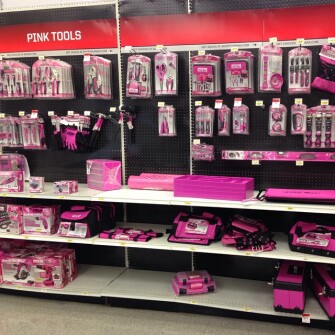L’Oréal—yes, the makeup company—has been popping up in my inbox quite a bit this past week.
The group recently announced the winners of its For Women in Science fellowship, which awards $60,000 grants to five female postdoctoral students who’ve demonstrated excellence in the fields of science, technology, engineering, and mathematics. Started in 2003, the fellowship also aims to support younger girls in pursing STEM careers.
The grant winners’ resumes are impressive, and include research in evolutionary genomics, early diagnosis of neonatal infections, and star formation. The women were honored at a ceremony in Washington yesterday at the National Museum of Women in the Arts. Twenty-five teenage girls interested in STEM were also chosen to attend “through a partnership with Teen Vogue and the National Girls Collaborative Project,” an advocacy group for gender equity in STEM, states the press release.
In promoting the events, L’Oréal has touted that 70 percent of the company’s “scientists and innovators are women,” while just 24 percent of STEM workers nationwide are female.
U.S. News & World Report covered the Washington event and, apparently, there was also plenty of talk about beauty.
“We know that beauty is not futile,” said L’Oreal USA chief executive officer Frédéric Rozé. “It has always been associated with humankind ... Beauty is based on science.”
In talking to the teenagers, female employees “shared how they turned their passion for science into the work they did with beauty and cosmetics,” reports U.S. News.
“I use our products,” said Rita El-Khouri, a senior scientist for L’Oreal . “I get to be a scientist but I also get to wear lipstick ... I’m a girlie girl and I like makeup.”
One scientist even provided beauty tips, reminding the young girls to “moisturize your skin and wear sunscreen.”
I don’t know about you all, but I’m still a bit fuzzy on why beauty itself—rather than the chemical compounds used in developing makeup or the scientific processes for testing products—even needed to come up at this STEM-focused event.
But I also don’t understand why “breaking a nail” would be a deterrent from doing math, as the subtitle of Kiss My Math, a book geared toward middle school girls, suggests. Or why tools need to be marketed completely differently for girls. Maybe it’s just me, though.

What are your thoughts, readers? Are efforts such as this to encourage girls to pursue STEM and raise awareness about female scientists productive? Or do they perpetuate stereotypes and marginalize the not-girlie girls in ways that can actually be harmful to women? Or is it a bit of both? As always, leave your comments below.
Image: Doris Nhan via Facebook
Caption: Pink tools are also more expensive, smaller, and less powerful. But they’re pink, so hey whatever. #pinktax #girltax
